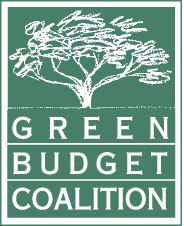Ecosystems in Canada and throughout much of the Americas depend on the ecological services provided by the billions of birds born in Canada annually, including seed dispersal, nutrient cycling, pest management and more. We cannot afford to allow our bird populations to decline further due to human actions. In this budget, the Green Budget Coalition urges the federal government to make a meaningful investment in birds by funding efforts to reduce human-caused risks to birds and improve their habitats. Specifically, there is a need for investments that help birds survive and thrive in urban landscapes, agricultural landscapes and in the vast working forests. Investments are needed to halt losses and recover populations of the most threatened groups of species, the aerial insectivores, grassland birds and shorebirds.
The third State of Canada’s Birds report will be published in 2024. Funding to support the science and monitoring programs on which the state of the bird reporting is based is essential to inform conservation and management decisions.
The Green Budget Coalition is calling for strategic investments to halt and reverse bird population declines through the following investments:
Total Recommended Investment:
$30 million over four years [ECCC – Canadian Wildlife Service] to:
- Mitigate human-related bird mortality in urban and working landscapes (agricultural and forestry) in Canada. This investment is intended to support programs and activities that directly address major human-related causes of direct and indirect bird mortality (e.g., destruction of habitat, pesticide use, collisions with human-built structures) and incentivize actions to restore nature. $12 million over four years
- Protect and restore key habitats and areas for grassland birds, aerial insectivores and shorebirds. Develop and implement an action plan to identify, prioritize, and protect critical areas for these three groups of species. $12 million over four years
- Maintain strong science programs to inform conservation efforts. $6 million over four years

